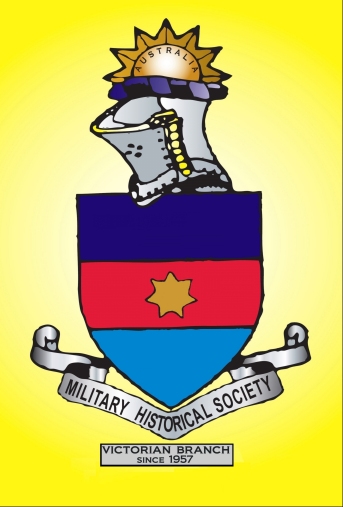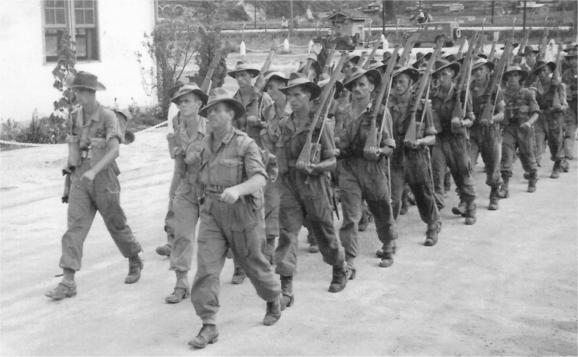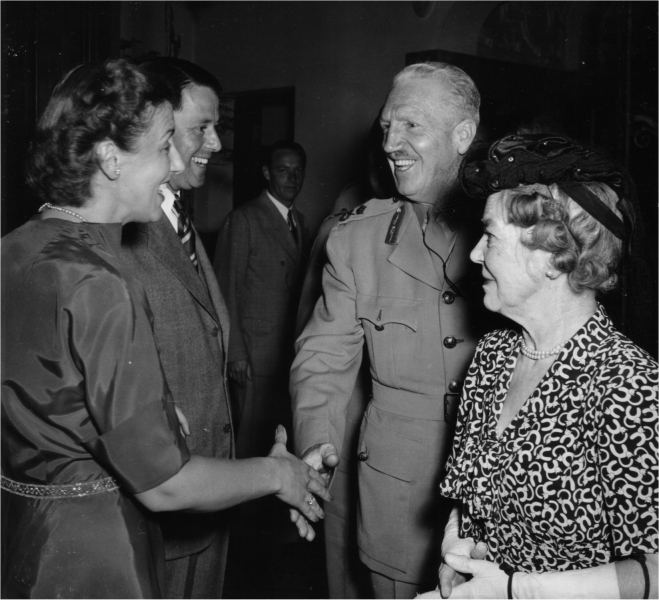MHSA National Conference Melbourne 2010
Paper presented by Lieutenant Colonel Neil C Smith, AM
Soldiers of BCOF
Introduction
Dr Jim WOOD, who is with us now in the audience, got it right when he used the term The Forgotten Force. This, the title of his fine work on the British Commonwealth Occupation Force in Japan, says it all with regard to the Australians who served in the Force during a most uncertain and potentially hazardous period
My aim is to put a name to each and every Australian soldier who served with BCOF.
To provide an overview of history of BCOF in general, and those who served in particular, I will now screen a piece I wrote and delivered for TV.
TV Presentation
A TV piece followed which put Australia's BCOF commitment between 1946 and 1952 into perspective. A chronology of events and significant historical issues were presented while many individual personnel and/or their families who served in Japan were examined.
The BCOF History
We can summarise the history of BCOF as follows:
- Two days after hostilities ceased we told the UK we would participate in a British Commonwealth Occupation Force for Japan with the aim essentially of demilitarizing Japan.
- Our troops started to assemble in Morotai.
- Early agreement to the command of BCOF by an Australian, under overall US command was obtained.
- The formation of a BCOF was announced 31st January 1946 comprising British, Australian, Indian and New Zealand personnel from the three services. (Soldiers of BCOF clearly only addresses the Army which was located mainly in Kure and Hiro).
- On 21st February 1946 the main body from Morotai started to arrive in Japan. It was based on 34th Brigade (4750 personnel) plus support troops (5000).
- Demilitarization tasks commenced immediately and covered matters such as repatriation of POWs, processing of returning Japanese military personnel, general law and order and disposal or rendering safe of munitions and explosives. Note the casualties and gallantry awards associated with this last aspect alone.
- During 1947 there was a general winding down of the BCOF commitment by the British especially.
- Later in 1947 Australian families (perhaps as many as 700) began to arrive in Japan to join their serving husband and fathers who were serving. They played a great role in returning life in Japan to normalcy. These people currently are a strong lobby group for recognition of BCOF service.
- By 1949 only the 3rd Battalion, The Royal Australia Regiment and 77 RAAF Squadron at Kure and Iwakuni were left of the Australian BCOF commitment. (About 2750 personnel)
- On 31st March 1950 the Australian government decided to withdraw most personnel from Japan.
- Before the major Australian units could withdraw the Korea Conflict erupted in June 1950 and the remaining Australians were quickly committed as part of a United Nations requirement.
- BCOF was disbanded on 28th April 1952 when the Peace Treaty with Japan was ratified. Other organisations remained in Japan as part of the Korea commitment.
The Need for Recognition
The need to remember BCOF more appropriately continues. This is necessary as.
- It was our first occupation of a sovereign state defeated in war.
- It was undertaken in a hazardous and unknown warlike environment and casualties were suffered.
- It was achieved with a succession of Australian leaders commanding a joint Commonwealth force.
- Veterans and their families plus officialdom need a first stop to identify those who served in like manner to the World War Two Nominal Roll.
- It realized a unique opportunity to secure a lasting place of influence in our region.
- It enabled the UN to be better placed to respond quickly and effectively to the Korean conflict.
What Recognition is Needed?
- Medals and the usual benefits. Such is beyond the scope of this presentation.
- A Nominal Roll. We simply do not know who served in BCOF. Despite representation from BCOF associations there has been no progress. Indeed, recent 'advice' from a senior Government representative was for the BCOF Association to ask its members who served and to compile their own Nominal Roll.
- There is no official list of fatalities. Even the Australian War Memorial has no information on this aspect.
- Historians and others are not aware of what units, etc served in the conflict and should similar Occupation Forces be required, there is a dearth of related detail to assess for future needs.
- Veterans and their families continue to lobby for the above.
Current Situation
My work on BCOF can be summarized as follows:
- About 19000 Australian Army personnel have been identified. The data base lists them alphabetically by name, number, rank, main BCOF unit and significant remarks such as fatal casualties.
- About 70 Australian Army units are identified.
- Fatal casualties numbering three figures are identified.
Conclusion
I have completed the Army BCOF Roll. If necessary I will publish this as I have the (Army) nominal rolls for the Korean War, Malayan Emergency, Indonesian (Borneo) Confrontation, Malay Peninsular and many other similar projects.
I am in no hurry to do this and remain disgusted with the interest shown in some quarters.
I have the data base here today and you are welcome to check any names of interest to you.



